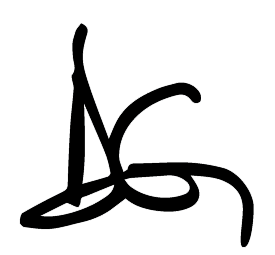Don't Make Resolutions, Just Be a Better You Instead
Why "You Are What You Do" Is a Load of Horse Hooie
Here they come: all those ideas about making New Year’s resolutions that will remake you in 2025. Because changing your habits will up your game and make you into the person you want to be, right? Uh … NO!
In This Article:
The real motivator for change is the cognitive dissonance between who you are and who you want to be.
Most New Years resolutions fail because we believe that changing an external habit will create lasting internal change.
To create sustainable new habits, you have to change the thoughts that drive the old habits.
If you want to DO something different, then BE someone different.
Key Application:
For every behavioral habit you want to change, start by asking yourself: What’s DRIVING that behavior?
Have you ever wondered why the end-of-year season brings that motivation for personal change? What is it about the an arbitrary event like the calendar flipping to January that suddenly motivates us to change our habits?
There are a number of reasons …
The Fresh Start Effect — This is a psychological phenomenon that motivates people to initiate changes at temporal landmarks, like the start of a new year, month, or week. This creates a psychological separation from the past, giving people a sense of a clean slate.
Return to “Normal” — The New Year signals a return to structure and normal rhythms. This creates the opportunity to “get back on track,” and open the new year in a positive, change-oriented frame of mind.
Optimism Bias — Moving into a new year can trigger thinking that the future can be better than the past, and that we can actually achieve those ambitious goals—even though we haven’t achieved them previously.
Cognitive Dissonance — This is my personal favorite, and it’s usually the most subtle and least understood of the “change” motivators—even though it’s the most powerful one. The dissonance we experience is the awareness that something in our life is out of alignment with our beliefs.
Cognitive dissonance is the one that has the highest potential for driving change.
Pay Attention to the Dissonance
Cognitive dissonance is the uneasiness we experience when we’re operating with conflicting beliefs, values, or attitudes simultaneously. It occurs when our actions are inconsistent with our sense of identity and how someone with our identity should act.
The uneasiness usually motivates us to eliminate the inconsistencies, either by …
Rationalizing the conflict — Not a good solution, but one we often deploy.
Changing beliefs, values and attitudes — These may or may not be in our best interests, and they don’t usually happen quickly/easily.
Altering behavior to align with our core beliefs — Hence, New Year’s resolutions.
Here’s where it gets tricky. Because we don’t understand cognitive dissonance, we end up misusing it. Cognitive dissonance is naturally unsettling—it’s supposed to be … after all, God designed our brains to work this way. Because it’s unsettling, we often want to move quickly to eliminate it. Seemingly, the quickest and easiest step to take is to change behavior: Start a new habit.
Makes sense, on the surface. But there’s a more foundational reality in play that we frequently overlook …
The Caboose Is a Terrible Engine
Our current behaviors are being driven by thought patterns we’ve had over our whole life. These thought patterns are subconscious and unconscious, shaped into existence by our life’s experiences and relationships.
In short, our behavior is the caboose. The engine driving the caboose is our thinking.
Let me give you an example. I once had cognitive dissonance around my ability to manage my time and my priorities, and believed that poor productivity was undermining my influence.
So I made a New Year’s resolution to buy a planner and set up a weekly planning regimen to identify goals, categorize them according to urgency and importance, prioritize action items, etc. It worked fine, but like most NY resolutions got discarded when I realized it made minimal impact and it was unsustainable.
Had I stopped to explore the dissonance more objectively and thoroughly, I could have realized much of my productivity issues stemmed from:
Doing too much,
Doing things that didn’t align with my identity and gifts,
Over-using my adaptability, flexibility and resiliency,
Not saying no (which I mistakenly attributed to my love of learning and exploration), and
My lack of discipline in collaborating.
Common to all of them was the deeper subconscious motivation to avoid disappointing people and looking like (gulp) …
A failure.
This core thought pattern—fear of failure—was the engine driving most of my productivity behaviors. Had I truly explored my dissonance, I would have realized new behaviors alone didn’t address the core issue.
Make no mistake: Changing habits is a good and necessary thing. But behaviors are the caboose in the change train. Work on the engine, and the caboose will follow.
Don’t DO so you can BE. BE so you will DO.
The world says, “We are what we do. Our habits make us who we are. If you want to BE different, you have to DO something different.”
I’m calling this horse hooie.
There’s a different mantra to work from: We do what we are. Our habits REVEAL and SUPPORT who we are. If you want to DO something different, you first have to BE someone different.”
This BE-to-DO approach sounds like something Yoda would say for a reason: It’s the way our physical brains are designed to work. Our sense of identity (BE) operates primarily unconsciously/subconsciously in our right hemisphere. Our intentional behavior (DO) operates consciously in the left hemisphere.
So if our identity is unclear or unsettled, it will always drive ineffective behavior. And no amount of behavior tweaks will transform an unhealthy identity. But when we’re clear on our identity, the behaviors and habits we engage in support our identity, and cognitive dissonance is reduced.
Back to my fear of failure as a case in point. I gave up attempting to new-habit my way to success, and instead locked in on my unique identity. I stopped trying to disprove a failure identity, and instead now operate out of who God made me to be.
Look Inward First, Then Look Forward
For every behavioral habit you want to change, start by asking yourself: What’s DRIVING that behavior?
Let cognitive dissonance be your friend. It’s giving you a hint that something’s misaligned.
Use reflection to get into a conscious rhythm of identifying the thought(s) driving your behaviors. For every behavior that brings dissonance, start by asking yourself questions like …
“What’s driving that behavior?”
“What is the underlying motive behind it?”
“What is it trying to solve?”
“What is it a product of?”
Your first answer might give you a clue, but you’ll probably benefit from continual exploration. Don’t dismiss your first answer, but don’t be too invested in it.
The goal is to bring the unconscious/subconscious thoughts into conscious awareness. You can’t change a thought unless it becomes conscious.
If you don’t get full clarity, don’t worry. Even a bit of clarity will contribute to getting better oriented. And (after starting down a path) if you realize you need to pivot because you have additional discovery or clarity on something new, then don’t view the effort you’ve invested as a loss. It’s an investment. In fact, it probably helped to bring the new insight.
Find a way to capture your thoughts, whether it’s journaling or talking with a friend. This helps to get additional insight as time goes by.
Peace be with you, and Happy New Year!
Did this newsletter pique your interest or stir up a question? Leave a comment and let’s discuss …






